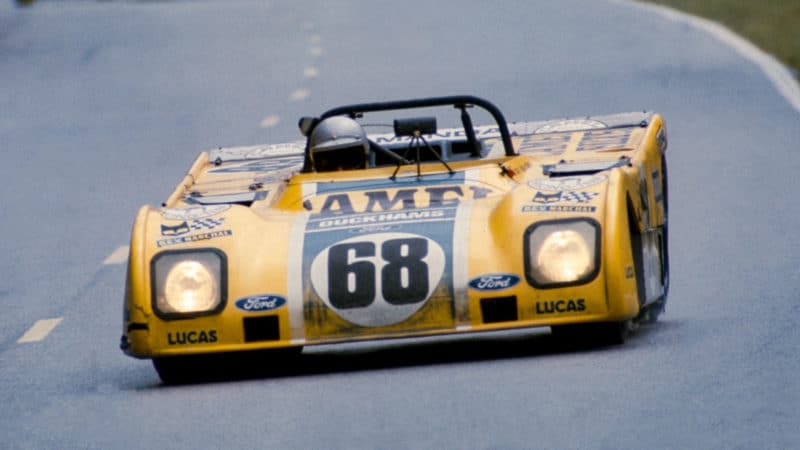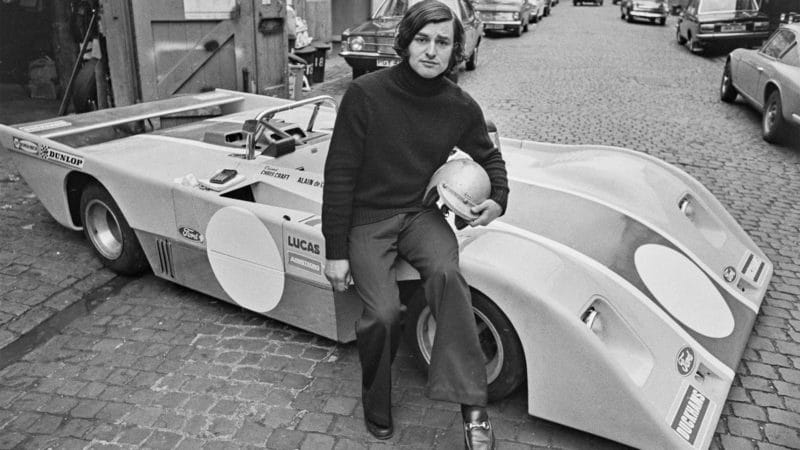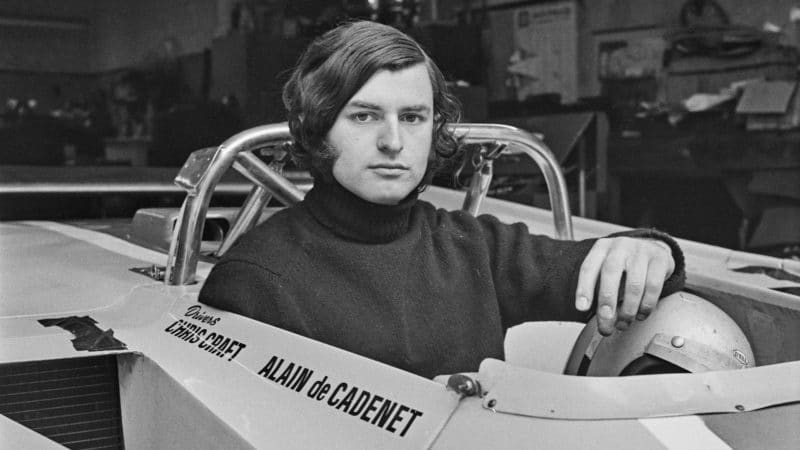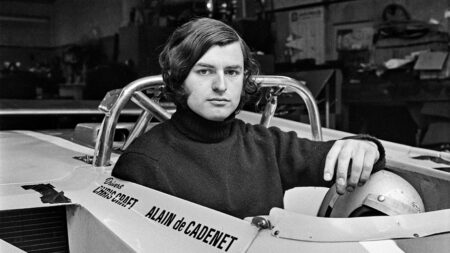The following year he acquired a Ferrari Dino 206 which he ran for a couple of years and then a Porsche 908 and a 2-litre Lola T210.
In 1971 he not only made his first of fourteen appearances at Le Mans but also raced outside Europe finishing 5th in a NART Ferrari 312 at the Daytona 24 Hours. He competed at his first Le Mans in an Ecurie Francorchamps Ferrari 512M with the Belgian Count Hughes de Fierlant but they retired. That same year he became a F1 entrant, acquiring an ageing Brabham BT33 which under the Ecurie Evergreen banner he entered in the two North American races for his friend Chris Craft to drive. Chris failed to qualify in Canada but made the start at Watkins Glen with the aid of sponsor Bick’s Pickles – who, he alleged, paid in kind in jars of the things. Chris qualified 30th but retired half way through with damaged suspension.
He decided to focus on Le Mans and after failing to buy a Ferrari 312PB from the factory decided to try to beat them with a car of his own construction. To design the first de Cadenet sports car he recruited a young designer at Brabham called Gordon Murray and, working in his spare time, Murray used some components from the F1 car to produce a machine which took them to 12th overall. In 1973 he briefly worked as a team manager for Graham Hill’s new Formula 1 team but by Monaco he had fallen out with his boss.
The next two years saw the car improved but it retired on both occasions. For 1975 he acquired a Lola T380, again with a Cosworth DFV and it is believed to be the first ever racing car constructed at Lola’s then-new Huntingdon factory. It proved to be down on top speed and the Craft/deCad combination could only finish a disappointed 14th.

With revised LM1 car at Le Mans ’72
DPPI
Highly successful changes were made to the aero package for 1976 where they gloriously finished on the podium, third behind the Porsche 936 of Jacky Ickx and Gijs van Lennep and the Mirage of Francois Migault and Jean-Lous Lafosse. The following year they finished a strong fifth.
Subsequent de Cadenet Le Mans entries included cars designed by Len Baily and built by John Thompson cars. There was a foray into the Can-Am series with the car in 1978 including a fifth place at Trois Riviere with sponsorship from the British Post Office. Alain was pretty adept at finding sponsors which also included Duckhams and Tate and Lyle sugar.
The following year, with Migault replacing Craft there, was a promising second in the Silverstone 6 Hours but disappointing retirement at Le Mans. Interspersed with this were great stories including the early morning 200mph test on a deserted M4 and the time de Cad came into the Le Mans pits to re-fuel to find not a soul and hardly a spanner there.



